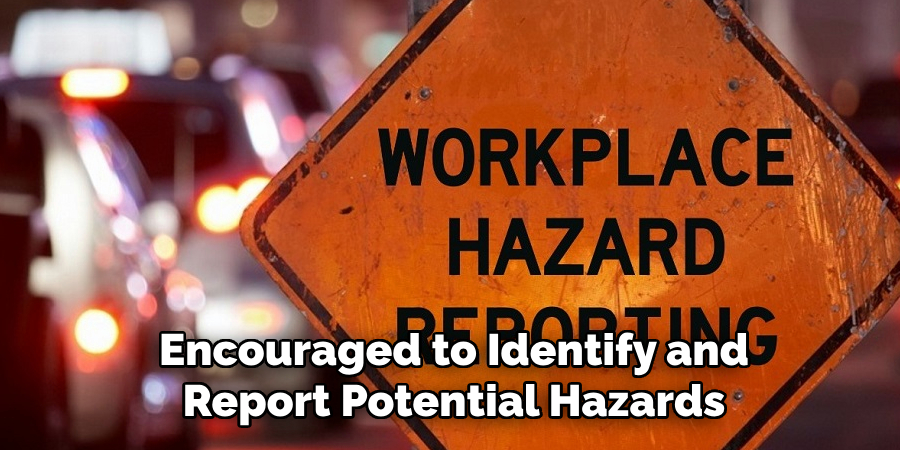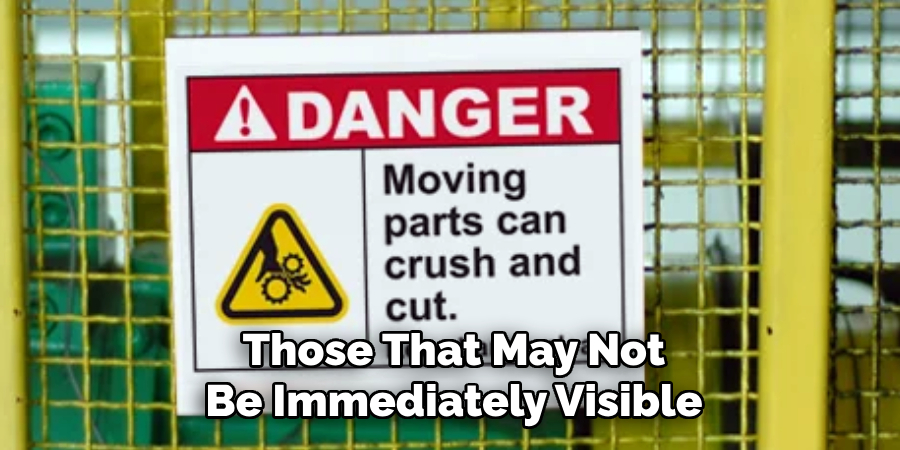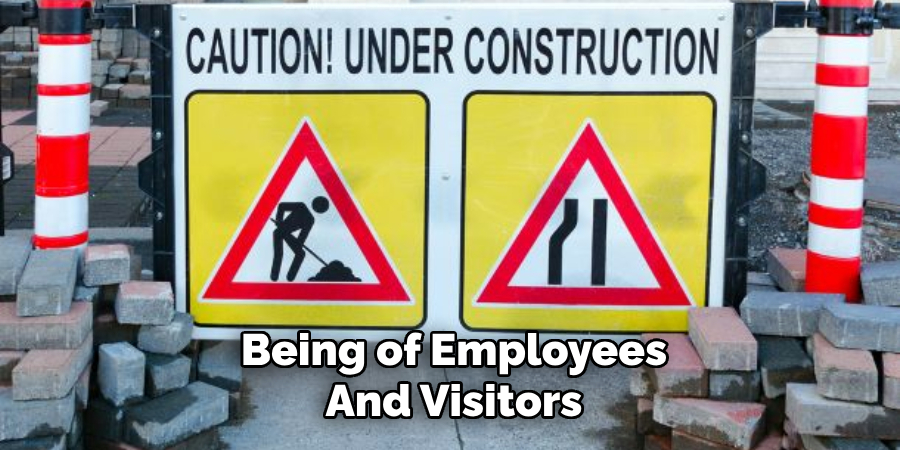Are you looking for ways to make your workplace safer? The use of hazard signs is one simple but important step in promoting safety. These signs are essential visual aids that warn people about potential hazards and remind them to take necessary precautions.

Hazard signs are crucial in ensuring safety across various environments, from workplaces to public spaces. These signs are designed to communicate critical warnings, instructions, or potential risks, allowing individuals to take necessary precautions. Using hazard signs effectively involves proper placement, clear visibility, and adherence to universally recognized symbols and standards.
By understanding How to use hazard signs effectively, you can reduce the risk of accidents, injuries, and even fatalities. This guide’ll discuss some practical tips for using hazard signs in different settings.
What Are the Importance of Hazard Signs?
Hazard signs prevent accidents, injuries, and fatalities in workplaces and public spaces. These signs serve as visual cues to individuals exposed to various hazards. They also remind people to adhere to safety procedures and take necessary precautions while working or passing through a hazardous area.
Some other key benefits of using hazard signs include:
- Enhancing Workplace Safety Culture: Having visible hazard signs around the workplace it shows that your organization values the safety of employees and visitors. This can help promote a culture of safety where everyone is encouraged to identify and report potential hazards.
- Compliance with Regulations: Many industries are required by law to display hazard signs in specific locations and situations. Failure to comply with these regulations can result in fines, penalties, or legal action.
- Reducing the Risk of Accidents: Hazard signs act as a warning system that alerts people about potential hazards before they come into contact with them. This early warning can significantly reduce the risk of accidents and injuries.
- Increasing Awareness: In workplaces where hazardous materials or equipment are present, hazard signs constantly remind them of their presence and potential risks. This helps to keep employees vigilant and mindful of safety procedures at all times.
These are just a few reasons why hazard signs are crucial for promoting safety in various settings. Now, let’s discuss some practical tips on how to use them effectively.

What Will You Need?
Before you start creating and placing hazard signs, here are some materials you’ll need:
- Hazard Sign Templates: You can find various free or paid templates online that follow standard design guidelines for hazard signs. Using these templates ensures that everyone easily recognizes and understands your signs.
- Durable Materials: Since hazard signs may be exposed to different elements like sunlight, moisture, or extreme temperatures, it’s essential to use durable materials such as plastic or metal for long-lasting signage.
- Mounting Hardware: Depending on where you plan to display the sign, you may need mounting hardware such as screws, bolts, adhesive tape, or zip ties.
Once these materials are ready, you can begin creating and placing your hazard signs.
10 Easy Steps on How to Use Hazard Signs Effectively
Step 1. Identify Potential Hazards:
Start by thoroughly assessing the environment where the hazard signs will be placed. Walk through the area and take note of any potential risks or dangers, such as slippery floors, high-voltage equipment, or areas with restricted access. Consider obvious hazards and those that may not be immediately visible, like chemical storage or uneven surfaces.
Consult safety guidelines and workplace regulations to ensure you identify every possible threat. Engaging employees or other individuals familiar with the environment can also help in spotting hazards that might otherwise be overlooked. By carefully identifying all potential risks, you can ensure that the placement and type of hazard signs effectively warn and protect individuals from harm.

Step 2. Choose the Appropriate Signage:
Once potential hazards have been identified, select hazard signs that effectively communicate the specific risks present. Ensure the signs comply with industry standards and local regulations, using universally recognized symbols and explicit language. For example, use caution signs with a yellow background for warnings and red signs for prohibitions. Additionally, consider the durability and material of the signs, especially if they will be exposed to harsh weather conditions or heavy wear. Choosing visually striking and easy-to-read signs is crucial to ensure they catch attention and convey the necessary information quickly.
Step 3. Determine Proper Sign Placement:
The effectiveness of hazard signs largely depends on where they are placed. Install signs in highly visible locations, ensuring they are easily noticed by individuals approaching the hazard. Place them at an appropriate height and angle so that they can be read comfortably without obstruction. For hazardous areas, consider using multiple signs to emphasize the risk and reinforce the warning. Proper placement ensures that individuals have enough time to read and react to the sign, reducing the likelihood of accidents.
Step 4. Regularly Inspect and Maintain Signs:
To ensure ongoing effectiveness, it is vital to regularly inspect hazard signs for any signs of wear, damage, or fading. Environmental conditions, such as sunlight, rain, and wind, can weaken the material or dull the colors of the signs over time. Replace or repair signs as needed to maintain their visibility and legibility. Additionally, check that signs remain securely mounted and in their proper locations, as shifts or falls can render them ineffective. Regular maintenance helps sustain the preventative function of hazard signs and ensures they continue to serve their purpose.

Step 5. Use Appropriate Languages and Symbols:
To maximize accessibility, ensure hazard signs are displayed in languages understood by the majority of the audience in the area. Consider using multiple languages or incorporating universally recognized symbols and pictograms for locations frequented by diverse groups. Symbols are particularly effective as they transcend language barriers, conveying essential warnings quickly and clearly. By tailoring the sign’s communication approach to the intended audience, you enhance its effectiveness and ensure everyone understands and adheres to safety measures.
Step 6. Ensure Proper Lighting and Visibility:
Hazard signs must remain visible in all lighting conditions to be effective. Ensure areas with low natural light have adequate artificial lighting, and consider using reflective materials for signs placed in dim or outdoor environments. Glow-in-the-dark or illuminated signs are instrumental in emergency scenarios, such as power outages, where visibility is critical. Proper lighting ensures that hazard signs can always fulfill their role in preventing accidents and communicating risks effectively.

Step 7. Regularly Inspect and Maintain Signs:
To ensure hazard signs remain effective, it is vital to perform routine inspections and maintenance. Over time, signs can become damaged, faded, or obstructed, reducing their visibility and effectiveness. Regularly check for wear and tear, clean signs to remove dirt or debris, and replace any that are damaged or no longer meet safety standards. Maintenance schedules should be part of your safety protocols to guarantee that signs consistently convey their intended messages without fail.
Step 8. Train Employees on Signage Awareness:
Educating employees about the meaning and importance of hazard signs is a crucial step in ensuring workplace safety. Conduct regular training sessions to familiarize staff with the symbols, colors, and placement of signs throughout the facility. Employees should understand how to respond appropriately to warnings and instructions conveyed by the signage. By fostering awareness, you create a safer environment where everyone proactively identifies and mitigates potential hazards.
Step 9. Evaluate and Update Signage Regularly:
Workplace environments and safety standards can change over time, making it essential to evaluate signage periodically. Conduct routine inspections to verify that all signs remain relevant, compliant with current regulations, and adequately placed for visibility. If new hazards emerge or processes change, update or add signage to reflect these developments. Reviewing signage ensures that it continues to serve its purpose of protecting employees and visitors effectively.
Step 10. Ensure Consistent Maintenance of Signage:
To maximize the effectiveness of workplace signage, it is crucial to maintain them consistently. Over time, signs can become damaged, faded, or obstructed, reducing their visibility and clarity. Schedule regular maintenance checks to clean, repair, or replace any signage as needed. Clear and well-maintained signs not only uphold safety standards but also demonstrate a commitment to the well-being of employees and visitors.

By following these ten steps, you can effectively implement hazard signs in the workplace. Proper selection, placement, and signage maintenance play a critical role in preventing accidents and promoting a safe environment for all.
5 Things You Should Avoid
- Ignoring Proper Placement: Placing hazard signs in uneasily visible areas defeats their purpose. Always ensure they are positioned in clear sightlines where individuals can notice them promptly.
- Using Vague or Confusing Symbols: Avoid using unclear or ambiguous symbols that may not be universally understood. Stick to standard, widely recognized icons to convey the warning effectively.
- Failing to Maintain Signs: Hazard-damaged, faded, or dirty signs can be misinterpreted or go unnoticed. Regular maintenance and updates are critical for ensuring their effectiveness.
- Overusing Hazard Signs: Overloading an area with too many signs can cause people to overlook their significance. Use hazard signs judiciously to emphasize key risks only.
- Not Tailoring Signs to Specific Hazards: Generic or irrelevant signs can confuse people and reduce awareness of danger. Make sure signs are specific to the risks present in the environment.
Conclusion
How to use hazard signs effectively requires careful planning and thoughtful execution. The key is to ensure that signs are visible, clear, and relevant to the specific dangers present.
They should adhere to standard symbols and language to maximize understanding and minimize confusion, and regular maintenance is essential to keep them in optimal condition. At the same time, their placement must be strategic and free from clutter. Ultimately, the aim is to balance providing necessary warnings and avoiding overuse, ensuring that people pay attention to and act upon the critical information conveyed by the signs.
By following these principles, hazard signs can be a reliable tool for enhancing safety and preventing accidents.

